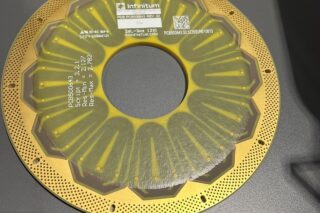Laboratory stirrers play a crucial role in mixing and agitating samples before analysis. Since it is not always easy to choose the right equipment in front of a multitude of manufacturers, we have produced this buying guide with tips and recommendations to help you make the right purchasing decision.
Laboratory Stirrer: A Comprehensive Guide
There are various types of laboratory stirrers, each catering to different needs.
1/ Magnetic Stirrers
Magnetic stirrers are the most common laboratory stirrers. The base houses an electric motor and a plate. This is where the solution container is positioned. An electric motor then rotates a magnetic bar inside the container, effectively stirring the sample.
2/ Overhead Stirrers
Overhead stirrers are designed for stirring, mixing, and homogenizing liquids, especially those with high viscosity. Unlike magnetic stirrers, they are placed on top of the container.
3/ Vortex Stirrers
Vortex stirrers are commonly used in molecular biology. They allow rapid mixing of solutions directly within test tubes or microtubes. These devices feature a sturdy base topped with a rubber receptacle. When the operator presses down on the receptacle using the bottom of a test tube, the electric motor activates, creating a low-amplitude, high-speed orbital motion within the test tube and its contents.
Choosing the Right Laboratory Stirrer
- HOW TO CHOOSE A MAGNETIC STIRRER
- HOW TO CHOOSE AN OVERHEAD LABORATORY STIRRER
- HOW TO CHOOSE A VORTEX STIRRER
- HOW TO CHOOSE A ROTARY OR ROLLER STIRRER
- HOW TO CHOOSE AN ORBITAL, LINEAR, OR ROCKING STIRRER
![[BUYING GUIDE] How to Choose the Right Laboratory Stirrer?](/wp-content/uploads/sites/3/lab-1000x625.png)




![Image [BUYING GUIDE] How to Choose the Right Industrial Robot?](/wp-content/uploads/sites/3/Industrial-Robot-320x213.jpg)

![Image [Buying Guide] How to Choose the Right Safety Shoes?](/wp-content/uploads/sites/3/Safety-Shoes-320x213.jpg)


![Image [Buying Guide] How to Choose the Right AMR?](/wp-content/uploads/sites/3/AMR-320x213.jpg)